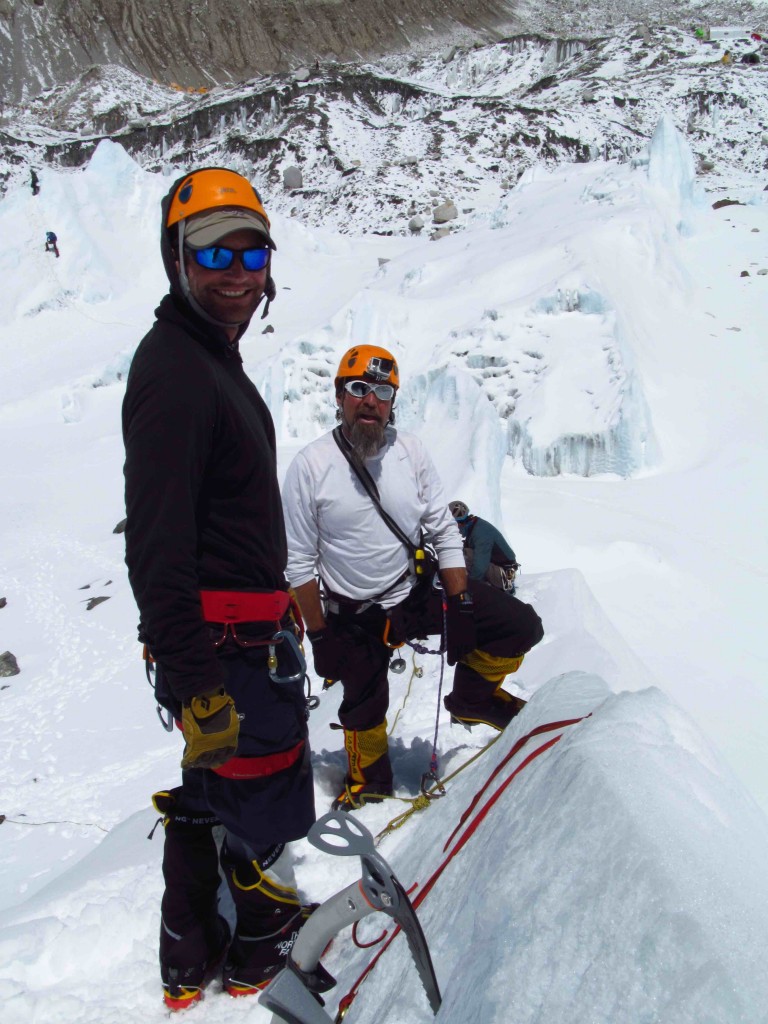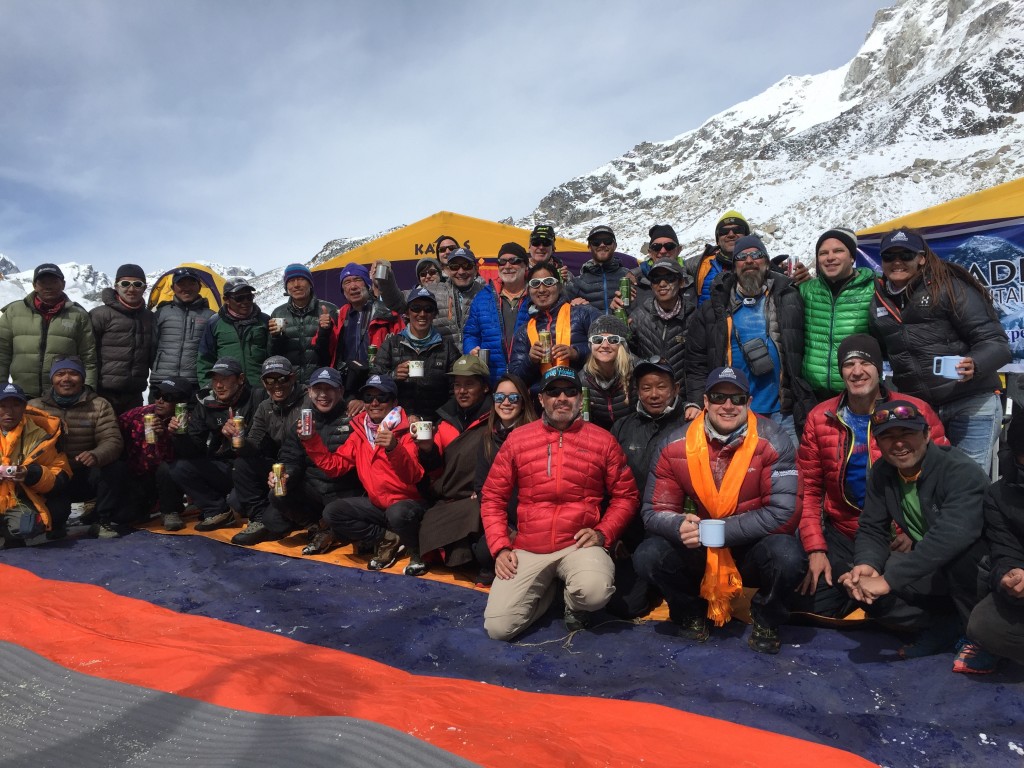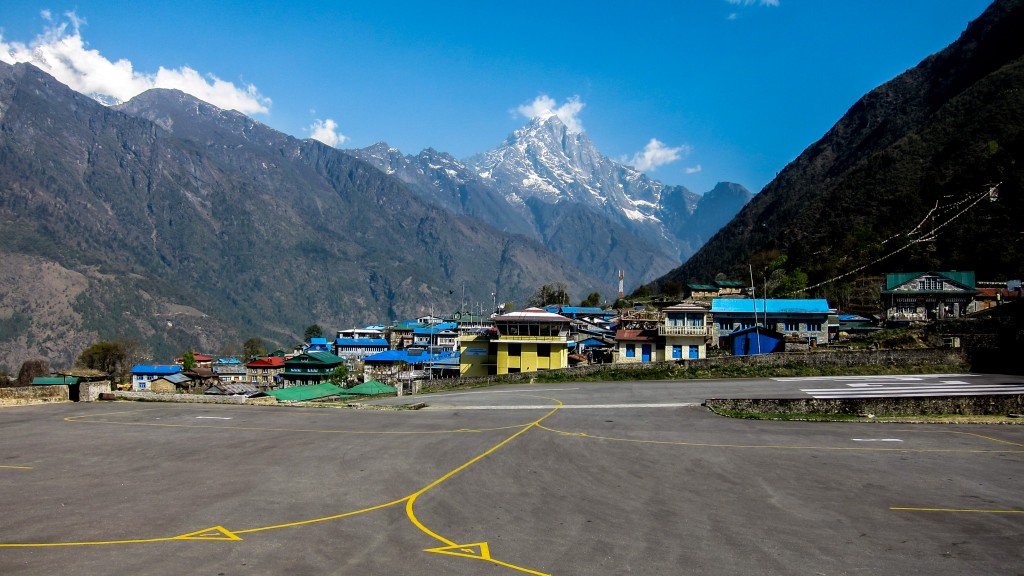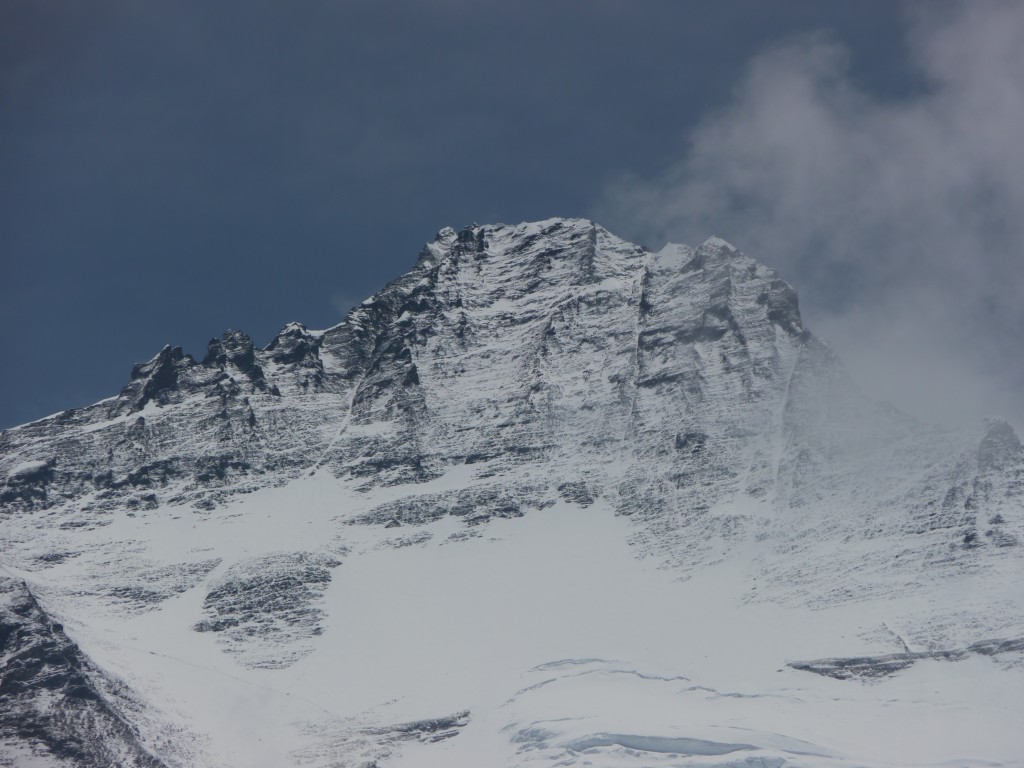Morning in Nepal. Garrett Madison and our climbing team reported in that all are well and safe at Camp 2. They are working with the other teams to assess this current situation and plan for options to decend to base camp. No ETA at this time but they are fine at Camp 2.
It is with deep sorrow and profound grief that we can confirm the loss of our Everest/Lhotse base camp doctor, Marisa Eve Girawong. Eve perished in the aftermath of the avalanche that struck the base camp area following the devastating Nepal earthquake earlier today.
Our thoughts and prayers are with Eve and her family and friends.
We will have more information later after daybreak in Nepal and additional updates from our team. Thank you for your combined prayers and well wishes.
Unfortunately we don’t have new information to report at this time. It is night in Nepal and we expect to next hear from our team in local morning (~10 hours from now) barring communications issues. As we get more information, we will post it.
We are deeply saddened by this terrible tragedy and our thoughts and prayers are with all in Nepal and their worldwide loved ones.
There has been a massive earthquake in Nepal. We have heard from our team that all of the climbing team is at Camp 2 and are fine. The earthquake struck while the team was climbing from Camp 1 to Camp 2 in the Western Cwm. There has been extensive damage at base camp and details are still coming in. We will post more information here when we have it.
We have had a fantastic week of training in the lower Khumbu glacier! After our Puja ceremony we spent 6 days reviewing fixed line techniques, climbing vertical ice, climbing ladders, rappelling, and we climbed about 1/3 of the way up the Khumbu Icefall route to Camp 1. The route seems easier than the last few years, however we are looking forward to the vertical ladder sections. We have also been ice climbing, it has been a very productive period of training and we are ready to head up to Camp 1 tonight! We plan to spend 2 nights at Camp 1 and then climb to Camp 2, and spend 2 nights there before returning to base camp. Be sure to follow our Rainon GPS track as we climb through the icefall tomorrow, this will show the exact track (new route) from Everest base camp to Camp 1.
Photos: Training in the lower Khumbu Icefall
Today we had our Puja ceremony with our whole team of climbers, guides, and sherpas. A Buddhist Lama led the prayers asking the mountain for safe passage before we begin climbing. We had very nice weather and will relax this afternoon. Tomorrow we begin our technical climbing review in the lower Khumbu Icefall. The weather is improving and we are excited to begin our acclimatization process by climbing high to sleep at our Camps 1 & 2. Everyone is doing well!
Be sure to catch Garrett Madison in the ESPN SportsCenter Featured episode “At the Top of the World” premiering this Sunday, April 12 on ESPN!
“At the Top of the World”, a look at how the people of Nepal are trying to balance their lucrative livelihood catering to adventure‐seeking tourists with the inherent dangers of the job one year after the avalanche tragedy that killed more than a dozen Sherpas on Mount Everest.
Our team arrived in Namche last night after a wonderful day of trekking and then enjoyed the comfort and fine meals at the Panorama lodge. Today we hiked up to the Everest view hotel for clear views of Everest, Lhotse and Ama Dablam, and then to Khumjung to visit the Hillary School. We will spend 2 more nights here in Namche before making our way up the valley towards base camp. Everyone is doing great.
This morning a few members took a helicopter flight, and we had a look at the new route up the Khumbu Icefall to Camp 1 on Everest. We were able to see clearly that the new route is in fact completely new, and veers to the ‘climbers right’ near Nuptse, avoiding the hanging ice on the West Shoulder that buried the 16 Nepali mountain workers last year. It appears that climbers will have to negotiate broken ice as before, and perhaps more vertical ladders. The red line on the right shows the new route (if you look closely you can see the footprints, ladders, fixed lines) while the red line on the left is the approximate old route from last year. There is at least one section that has 4 vertical ladders tied together to ascend up a very large ice cliff.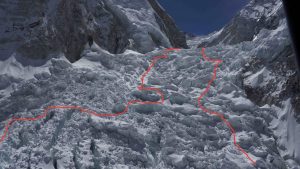

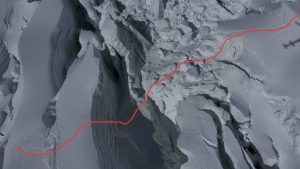
This morning the whole team flew from Kathmandu to Lukla, to begin our trek to base camp. We just finished breakfast and now starting the hike today, it’s a beautiful day here in the Khumbu!!
Everest & Lhotse 2015 is coming soon…stay tuned! Check out Google’s amazing footage of the Khumbu! We are so excited to be back in this magical place very soon!

